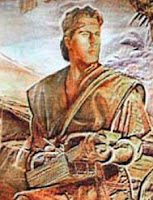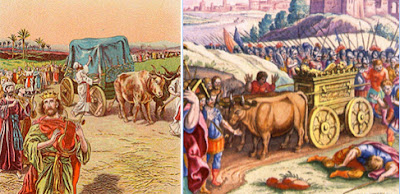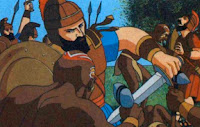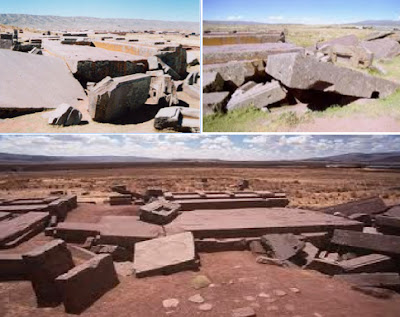Here are some
additional comments or questions
sent in by readers of this website:
Comment #1: “Why does the Book of Mormon imply a seven
day week (Mosiah 13:18) when it was not known to Ancient Americans? The
Mesoamericans used a variety of calendars, none of which match the Old World
calendar. The Maya seemed to be oversupplied in the calendar department. One
calendar consisted of a 260-day cycle divided into 13 'months' of twenty days.
(This calendar was used by most of the ancient Mesoamericans). Each day was
presided over by it's own god. Another consists of a 365-day cycle, also
divided into 'months' of twenty days, eighteen of them in fact. The five leftover
days were called the 'resting, or sleep of the year'. Another consists of a
3276-day cycle divided into four quadrants of 819 days (the product of 7*9*13,
all sacred numbers to the Maya). And then, of course, there was the so-called
'long count' calendar, which simply counted days from the creation of the world
(August 11, 3114 BC, if anyone wants to know). (Linda Schele, 'A Forest of
Kings', pg. 78)” Lindsey
Response: First of all, the scripture quoted is about a
prophet named Abinadi, who an evil king named Noah was trying to find reason to
kill. In the course of the discussion in which he is calling the Nephites in the city of Lehi-Nephi, and
especially the King and his priests to repentance, Abinadi is recounting the
Commandments of God, and specifically repeats the Law of Moses “ten
commandments” (see Mosiah 12:27-37). As he reaches the commandment about
keeping the Sabbath day holy, he says and it is recorded in Mosiah 13:17-19): “Six
days shalt thou labor, and do all thy work; But the seventh day, the sabbath of
the Lord thy God, thou shalt not do any work, thou, nor thy son, nor thy
daughter, thy man-servant, nor thy maid-servant, nor thy cattle, nor thy
stranger that is within thy gates, for
in six days the Lord made heaven and earth, and the sea, and all that in them is;
wherefore the Lord blessed the sabbath day, and hallowed it.
Abinadi
is talking about worshipping the Lord, that it should be one day in every week.
This is also found in Mosiah 18:25 where “one day in every week was set apart,”
and also in Alma 31:12 and Alma 32:11, both referring to the Zoramites
worshipping one day in every week, and Alma telling them they should worship
God more than only once a week. However, none of these three references give
any suggestion, hint, or information regarding how many days a week held, or
how many weeks were in a month.
Secondly,
there is no scriptural proof that the Land of Promise was in Mesoamerica, as we
have written numerous posts about. Some LDS believe that and others consider
one of numerous other suggested locations to be the correct location.
Personally, I find matches to every geographical scripture (65) present in the
Andean area of South America, and not another location matching more than a
handful of references. It should also be noted, that while the Maya and Aztec
used calendars of days, the Jews and at least the Mulekites used lunar
calendars, which would require a shortened thirteenth month. We know the
Nephites had a month calendar (Alma 10:6; 14:23; 16:1; 49:1; 52:1; 56:15,27,42; 58:7; 3 Nephi 3:8; 4:7,11; 8:5), and
specifically, months 1 through 11 are shown. Whether they had a 12th
month, or an additional 13th month or more, is not known from the
scriptural record.
The
earliest Mesoamerican calendar believed to be in use was the 260-day calendar,
which was strictly a ritual calendar with no correlation to astronomical or
agriculture cycles, and dated to 500-400 B.C. There was also a 365-day, vague
year, calendar that approximated the tropical year—however, that type calendar,
“precession of the equinoxes,” or year, was introduced by Hipparchus in the
middle of the 2nd century B.C. in Greece, and the date of the
origination of the Mesoamerican calendar is unknown. The next Mesoamerican
calendar was the Long Count found on Mayan inscriptions, and dates to 200 to
900 A.D. Thus we are left with only a 260-day confirmed ritual calendar, and
neither the length nor the purpose is consistent with the Book of Mormon, nor
would it be expected to since the Land of Promise was not in Mesoamerica.
Comment
#2: “Why didn’t Nephi compare and
contrast the New World with Jerusalem? These were two vastly different places”
Guilford D.
Response:
I might ask, why don’t you read the book you are critiquing? Nephi made it
quite clear: “For I, Nephi, have not taught them many things concerning the
manner of the Jews; for their works were works of darkness, and their doings
were doings of abominations” (2 Nephi 25:2), and “But behold, I, Nephi, have
not taught my children after the manner of the Jews; but behold, I, of myself,
have dwelt at Jerusalem, wherefore I know concerning the regions round about;
and I have made mention unto my children concerning the judgments of God, which
hath come to pass among the Jews, unto my children, according to all that which
Isaiah hath spoken, and I do not write them” (2 Nephi 25:6).
Comment
#3: “Your Book of Mormon purports to be
the most perfect book, and if "all Scripture is
God-breathed" (2 Tim. 3:16), then Scripture cannot err, since God cannot
breathe or speak error. If, as Jesus Himself taught, not the smallest letter or
part of a letter will pass away from the OT until it has all been fulfilled
(Matt. 5:18), then the OT at least must be without error. And if the OT is
inerrant, any future Scripture will have to meet that standard of truth, and
your book does not!” Channing G.
Response: If you are going to quote the Bible, then quote it
correctly and understand its meaning. First of all, jot and tittle in this
scriptural sense do not mean letters and words (in typography, jot is an “i”
and “tittle” is the dot or original slash over the “i”), but refer to tiny
quantities in the Lord’s message. The phrase passed into English via William Tindale’s
translation of the New Testament in 1526, and in the language of 1611 (KJV),
the verse is rendered: “For verily I say unto you,
Till heaven and earth pass, one jot or one tittle shall in no wise pass from
the law, till all be fulfilled” (Matthew 5:18). These words are uttered by
Christ during his mortal ministry in which he came to earth to bring his gospel
(Good News), surrounding the atonement and resurrection, which he carried out.
His mission was to fulfill the Law of Moses, and create a new law, or doctrine,
in which, to the Jewish mind to which he was addressing his comment, was tied
into law. He said, in effect, “Not one tiny part of my law, or the tiniest part
of my law, will be ignored (is to be ignored) from now until everything I have
said shall be fulfilled.” It is not the letters that Jesus was referring to,
but the law they spelled out. And as far as errors in the Old and New
Testament, there are more than can be counted and have been documented by
numerous bible scholars. The Book of Mormon has never purported to be perfect
in its typesetting, spelling, or even its grammar. It is said to be perfect in
its description of the gospel of Jesus Christ, and as Joseph Smith stated, “I
told the brethren that the Book of Mormon was the most correct of any book on
earth, and the keystone of our religion, and a man would get nearer to God by
abiding by its precepts, than by any other book,” referring to its religious
correction and perfection.

































